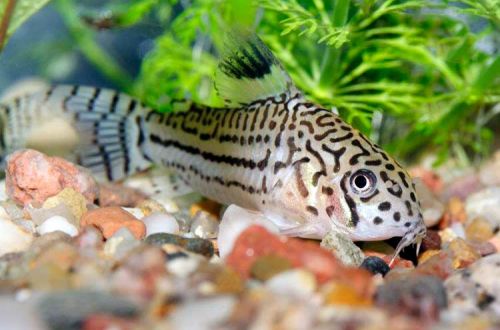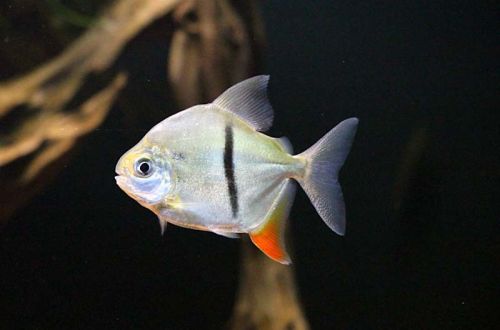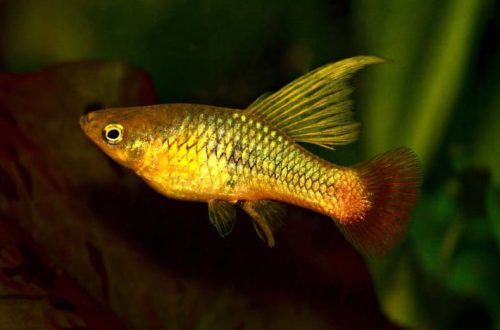
Mesh corridor
Corydoras reticulata, scientific name Corydoras reticulatus, belongs to the family Callichthyidae (Shell catfish). The catfish is native to South America. It is found throughout the lower Amazon basin. Inhabits mainly the bottom layer of small rivers and streams, hiding among snags and thickets of aquatic plants.

Description
Adult individuals reach a length of about 6 cm. The fish has a stocky body shape characteristic of the Corydoras with a high back and a large head. The body is covered with rows of bony plates – modified scales necessary for protection from small predators. The same purpose is served by the first rays of the fins, which are thickened and pointed at the ends. The color is light with a mesh pattern of dark stripes and irregularly shaped specks. There is a characteristic dark spot on the dorsal fin.
Behavior and Compatibility
Peaceful, friendly to relatives and other fish. They get along well with most non-aggressive species of comparable size. Small cyprinids, small cichlids and labyrinthine, non-territorial catfish, for example, from among the same Corydoras, will be a good choice. They prefer to be in a group of 3-4 individuals.
Brief information:
- The volume of the aquarium – from 70 liters.
- Temperature – 22-26°C
- Value pH — 6.0–8.0
- Water hardness – 2–25 dGH
- Substrate type – any soft
- Lighting – subdued or moderate
- Brackish water – no
- Water movement – light or moderate
- The size of the fish is about 6 cm.
- Food – any sinking food
- Temperament – peaceful calm fish
- Keeping in a group of 3-4 individuals
Maintenance and care, arrangement of the aquarium
The optimal size of the aquarium for a flock of 6 fish starts from 70 liters. In the design, it is recommended to use a soft substrate of fine sand, various snags, stones and other natural or artificial decoration items. The presence of thickets of plants, including floating ones, is welcome, which will become a natural means of shading.
An important condition for successful long-term maintenance is warm, clean water rich in oxygen. You may need additional aeration of the aquarium.





